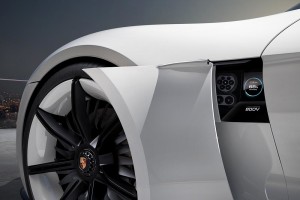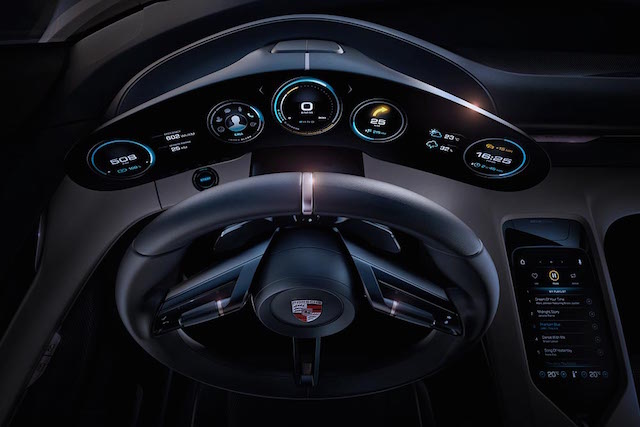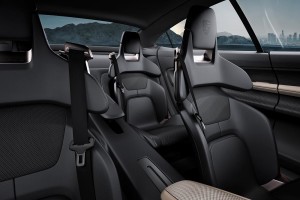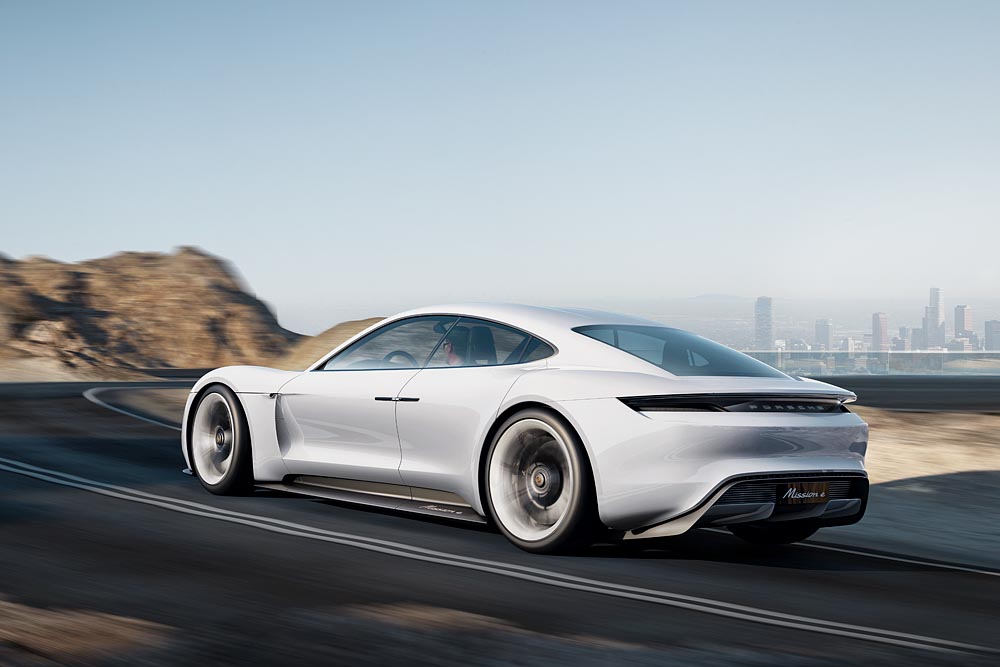Bucking to 100 kmph in 3.5 seconds, the Mission E is quick to drive and quick to recharge 80 per cent of its electrical energy. 15 minutes is what we are talking.
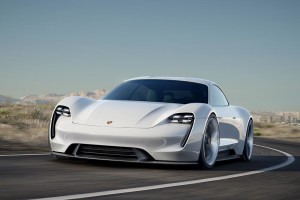 Frankfurt got to see the first Porsche that is an all-electric four-seat sports car. Cues abound from the all-time popular icons from the Porsche line up, while the future-proof performance of the first 800-volt drive system spin more than 600 hp with the ability to cross 500 km before a charger-stop. The Mission E is an all-wheel drive, all-wheel steering concept that borrows generously from endurance racing technologies perfected by Porsche.
Frankfurt got to see the first Porsche that is an all-electric four-seat sports car. Cues abound from the all-time popular icons from the Porsche line up, while the future-proof performance of the first 800-volt drive system spin more than 600 hp with the ability to cross 500 km before a charger-stop. The Mission E is an all-wheel drive, all-wheel steering concept that borrows generously from endurance racing technologies perfected by Porsche.
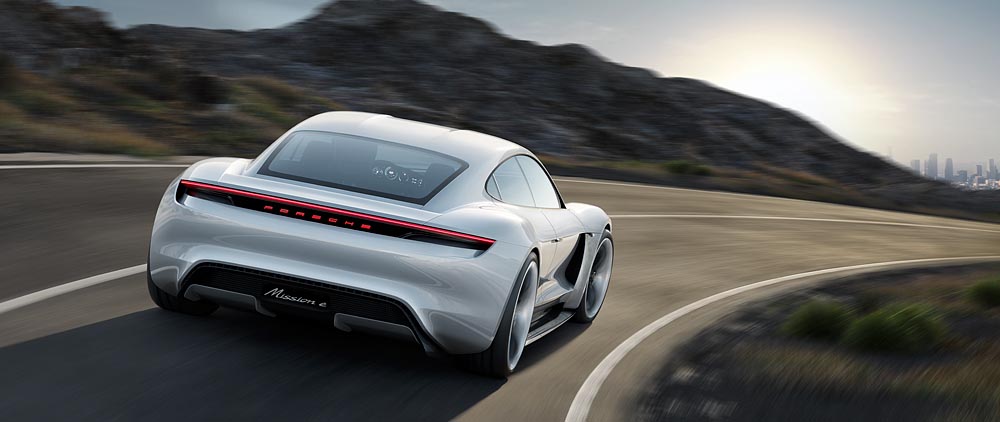 Porsche is one of the pioneers of a new technology that uses an 800 volt system instead of the currently popular 400 volt technology. This simply means, lower weight due to thinner cables, much faster charging times and therefore longer distance covered with shorter breaks. After the 500 km distance travelled, the Mission E will be ready for the next 400 in just 15 minutes, making it as practical as any.
Porsche is one of the pioneers of a new technology that uses an 800 volt system instead of the currently popular 400 volt technology. This simply means, lower weight due to thinner cables, much faster charging times and therefore longer distance covered with shorter breaks. After the 500 km distance travelled, the Mission E will be ready for the next 400 in just 15 minutes, making it as practical as any.
The Mission E is indebted to this year’s Le Mans victor, the 919 hybrid. Two permanent magnet synchronous motors (PMSM), similar to those in the race car, produce over 600 hp while making brake energy recuperation possible. Leaving the 100 mark in 3.5 seconds, the Mission E climbs to 200 in under 12 seconds.
Unlike today’s electric drive systems, the PMSM can develop their full power even after accelerating briefly and frequently. The all-wheel drive system with Porsche Torque Vectoring and the precise all-wheel steering make the Mission E fit for the racetrack, as seen in its under eight-minute lap time at the Nürburgring Nordschleife.
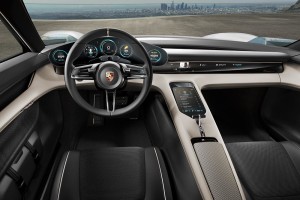 There are some interesting design facets of the Mission E. In maintaining the Porsche signature architecture, the concept car relates a lot to the 918 Spyder and the low-cut 911 design. The Mission E stands 130 cm from the ground. The window-lines are also quite like the 911, with one major difference: two counter-opening doors (suicide doors) allow for easy entry, without a B-pillar. The traditional side-mounted door mirrors have been replaced with inconspicuous cameras, contributing to the car’s exceptional aerodynamics. The images are displays lower corners of the windscreen. The Mission E has wide tyres mounted on 21-inch wheels in front and 22-inch wheels at the rear – made of carbon!
There are some interesting design facets of the Mission E. In maintaining the Porsche signature architecture, the concept car relates a lot to the 918 Spyder and the low-cut 911 design. The Mission E stands 130 cm from the ground. The window-lines are also quite like the 911, with one major difference: two counter-opening doors (suicide doors) allow for easy entry, without a B-pillar. The traditional side-mounted door mirrors have been replaced with inconspicuous cameras, contributing to the car’s exceptional aerodynamics. The images are displays lower corners of the windscreen. The Mission E has wide tyres mounted on 21-inch wheels in front and 22-inch wheels at the rear – made of carbon!
The Mission E has four single race-inspired seats fitted into a truly futuristic cabin that adjusts its functions intuitively to the driver’s position. The absence of a transmission tunnel translates to a lighter and more open atmosphere. The central console forms an elegant bridge that extends up to the dashboard, with open space beneath it.
Instruments are operated by eye-tracking and manual control; some even do it via holographic display with touch-free gesture controls! An eye-tracking system detects, via camera, which instrument the driver is viewing. The driver can then activate the menu of the instrument in focus by pushing a button on the steering wheel and navigate in it – which also involves interplay of eye-tracking and manual activation. The display also follows the seat position and body attitude of the driver in what is known as a parallax effect. If the driver sits lower, higher or leans to one side, the 3D display of the round instruments reacts and moves with the driver, allowing all vital information like vehicle speed to be always within the driver’s line of sight.
A handful of the future
The driving experience looks more like an illusionist’s performance. Individually selectable Apps, stacked in a three-dimensional space, control primary functions such as media, navigation, climate control, contacts and vehicle. The desired symbol is activated by gestures that are detected by sensors. A grasping gesture means select, while pulling means control. And yes, you guessed it! The concept vehicle can also be configured externally from a smartphone or tablet via Porsche Car Connect.


